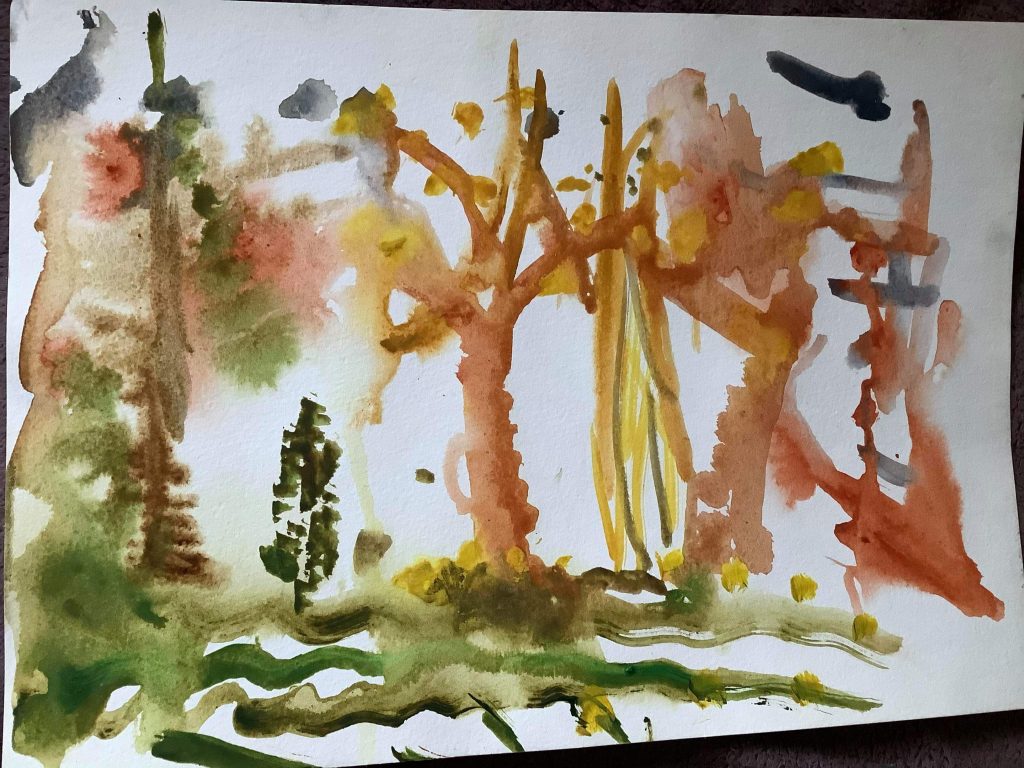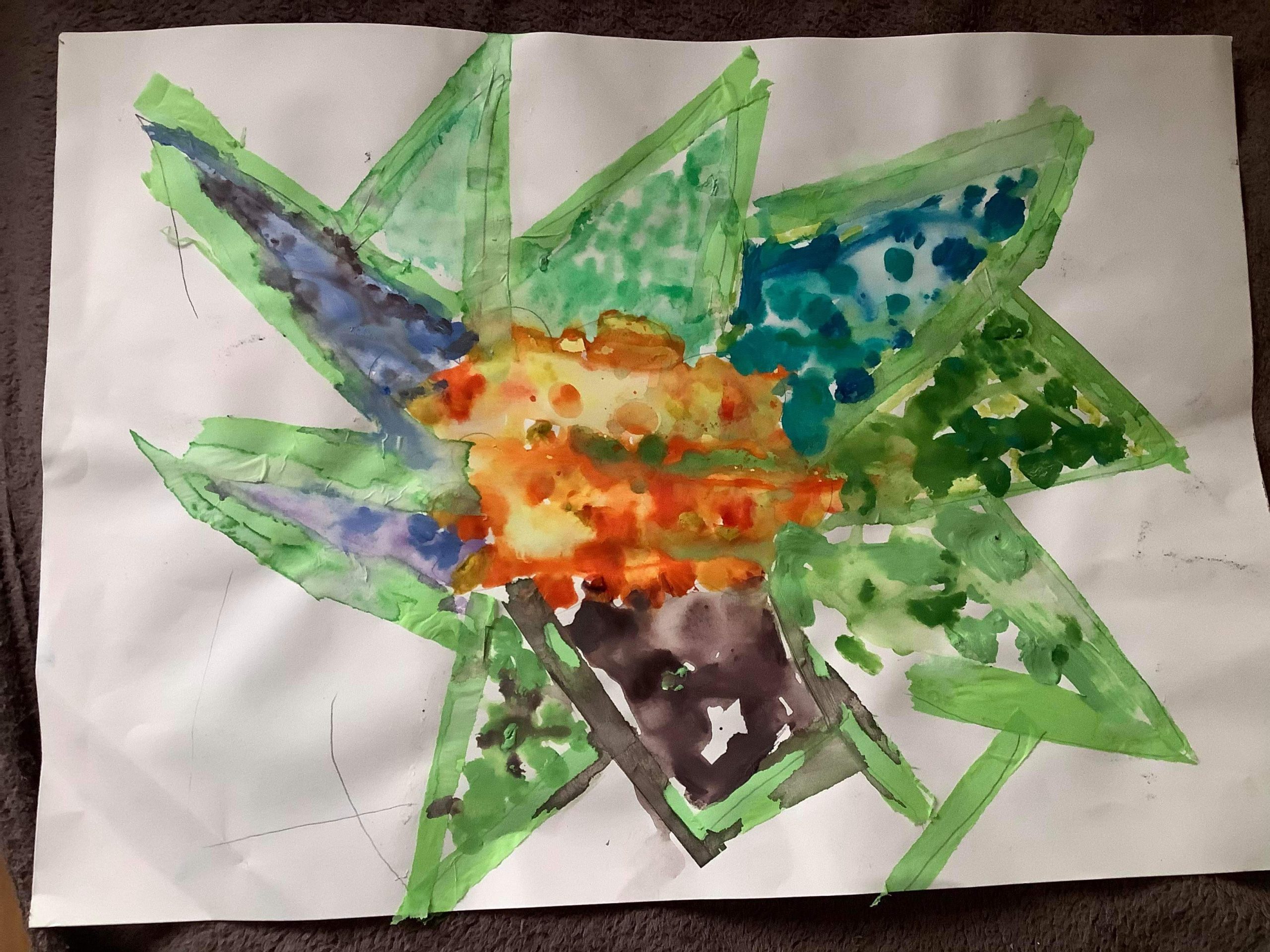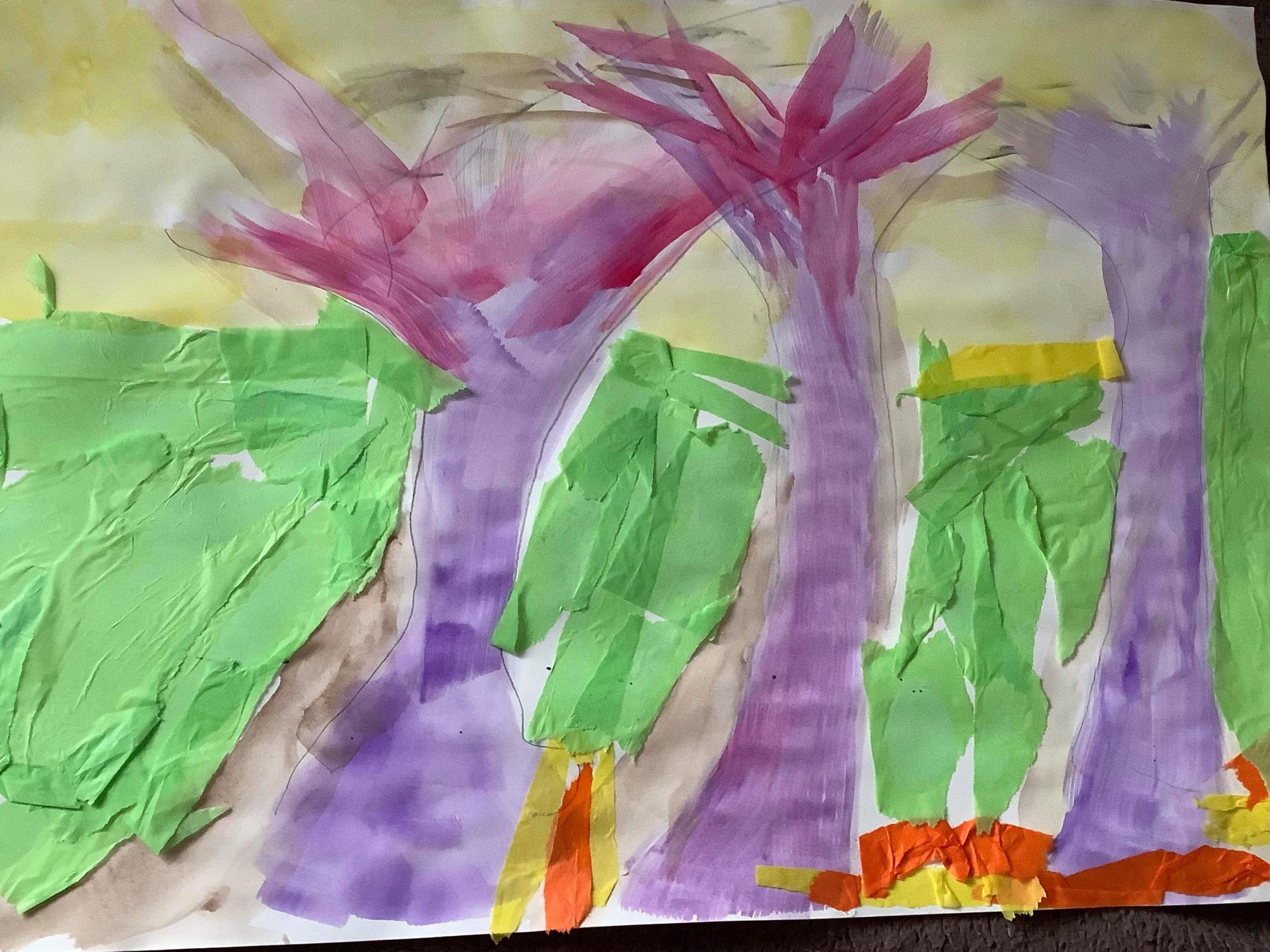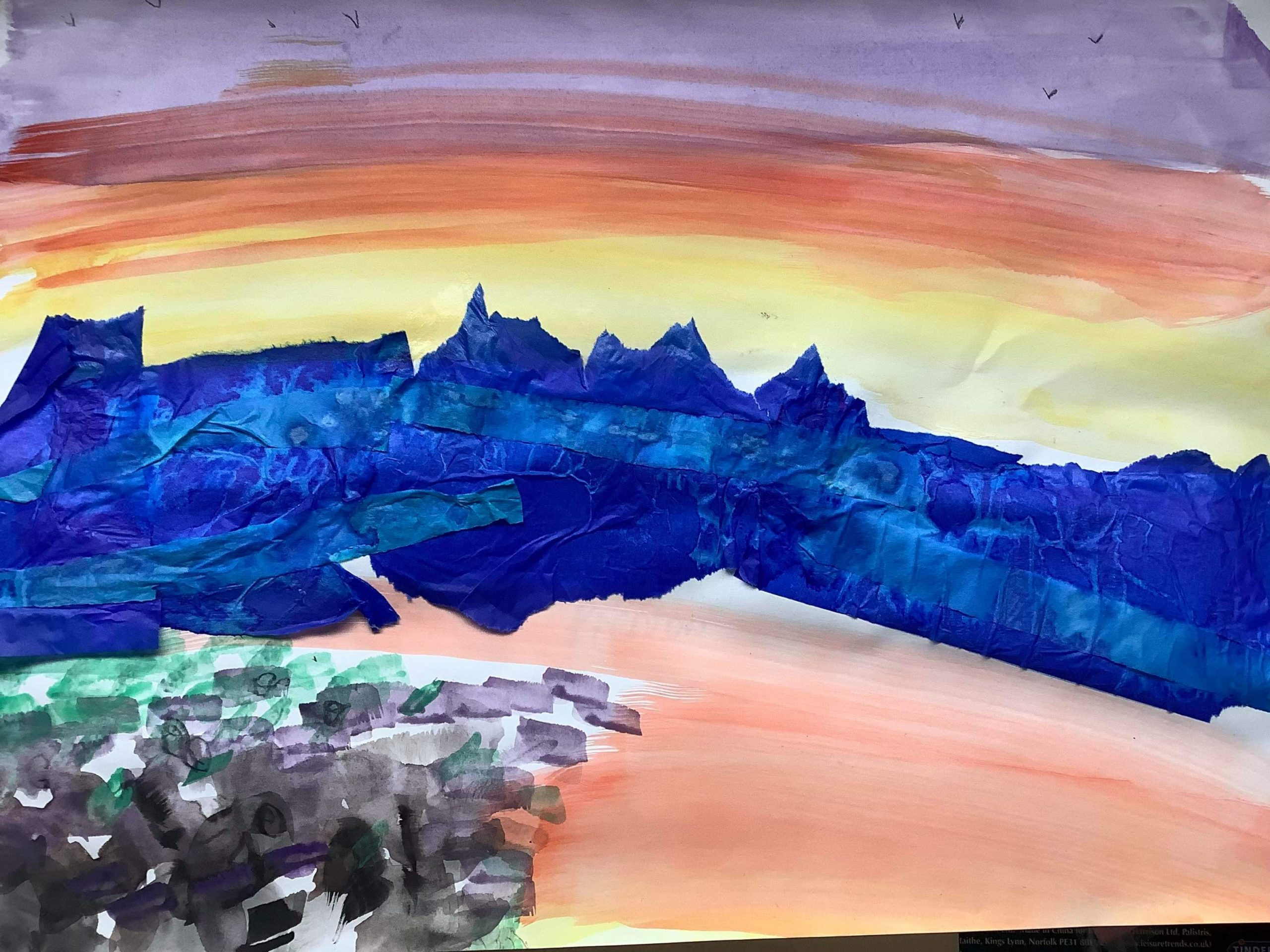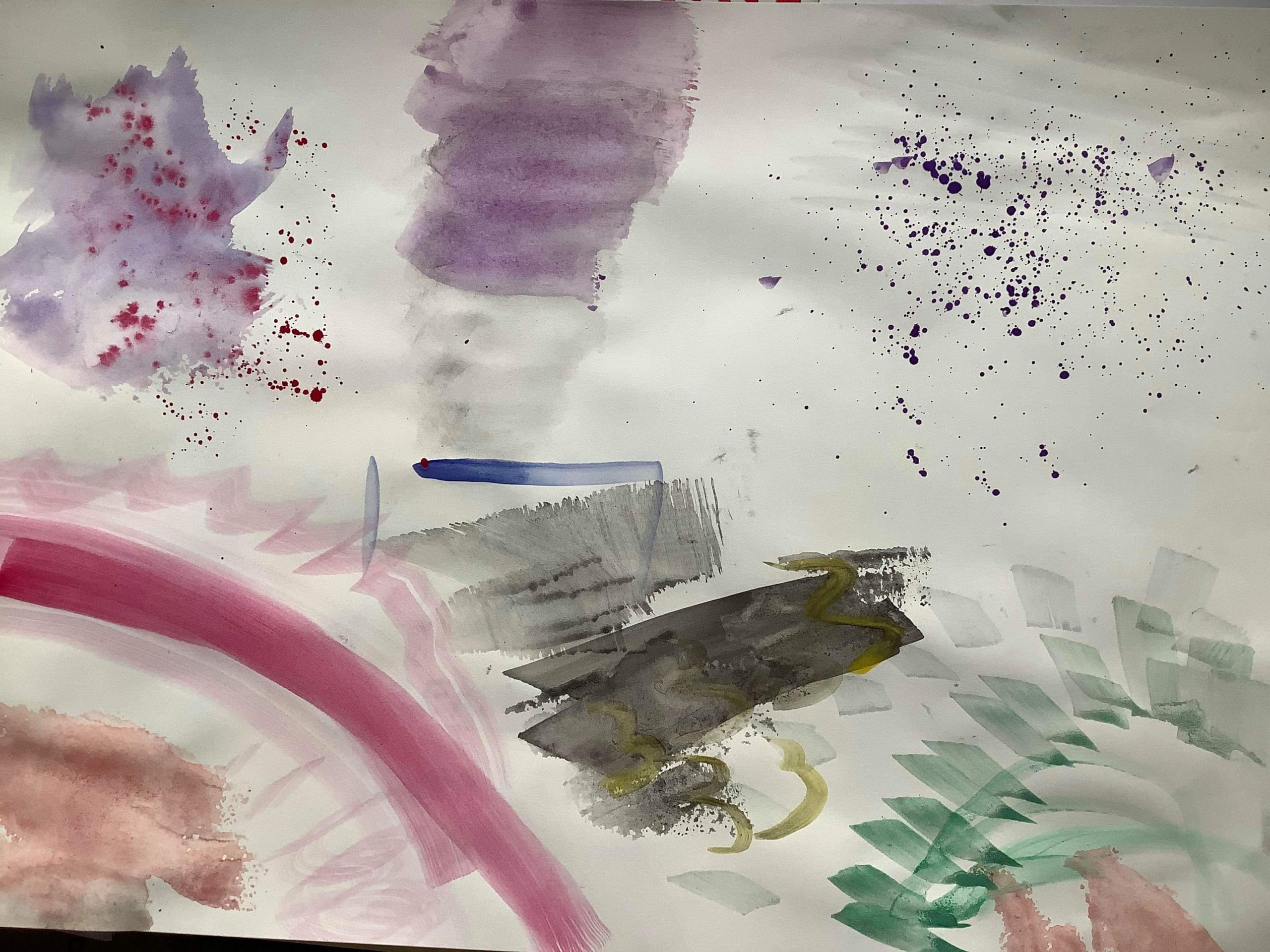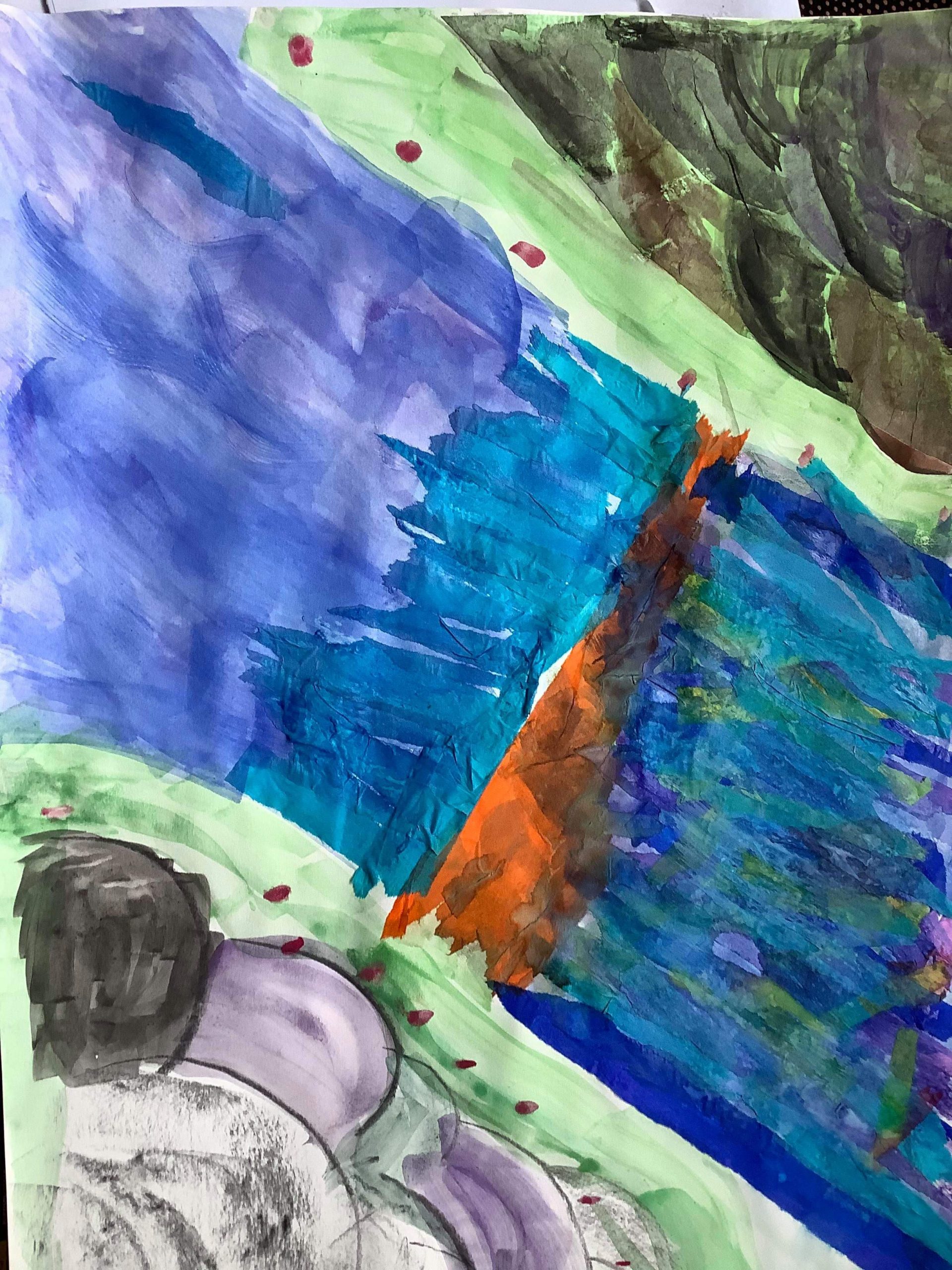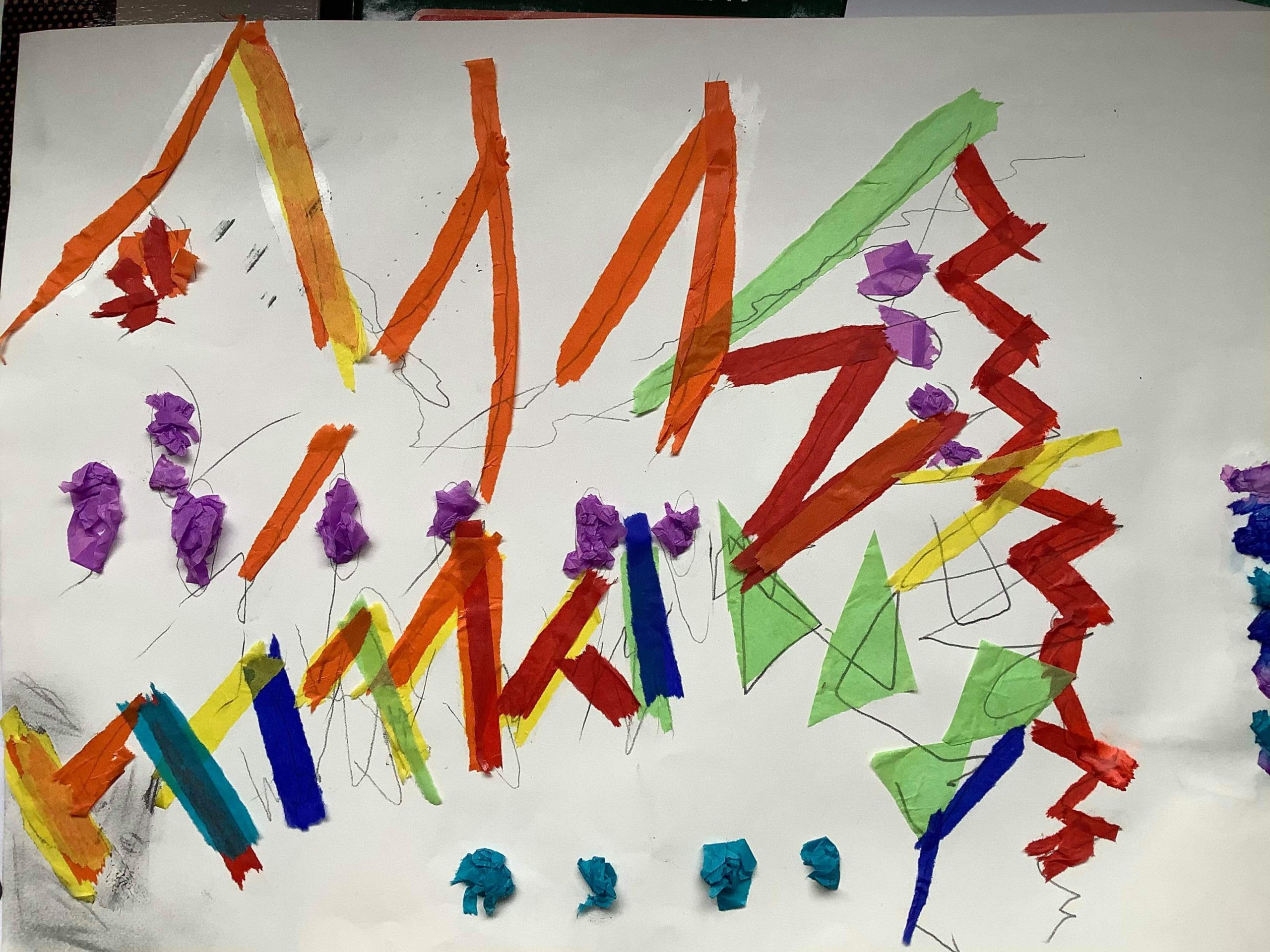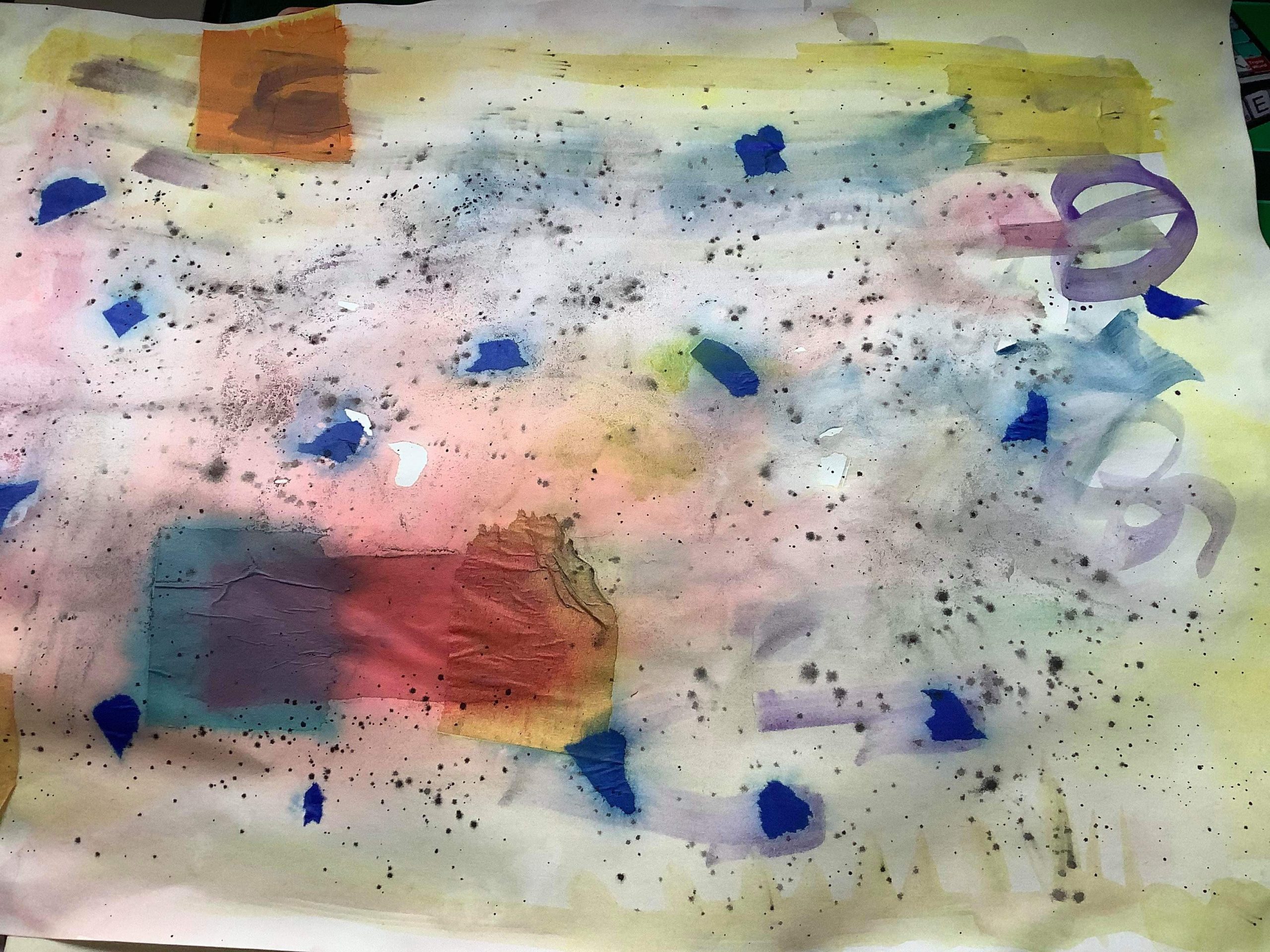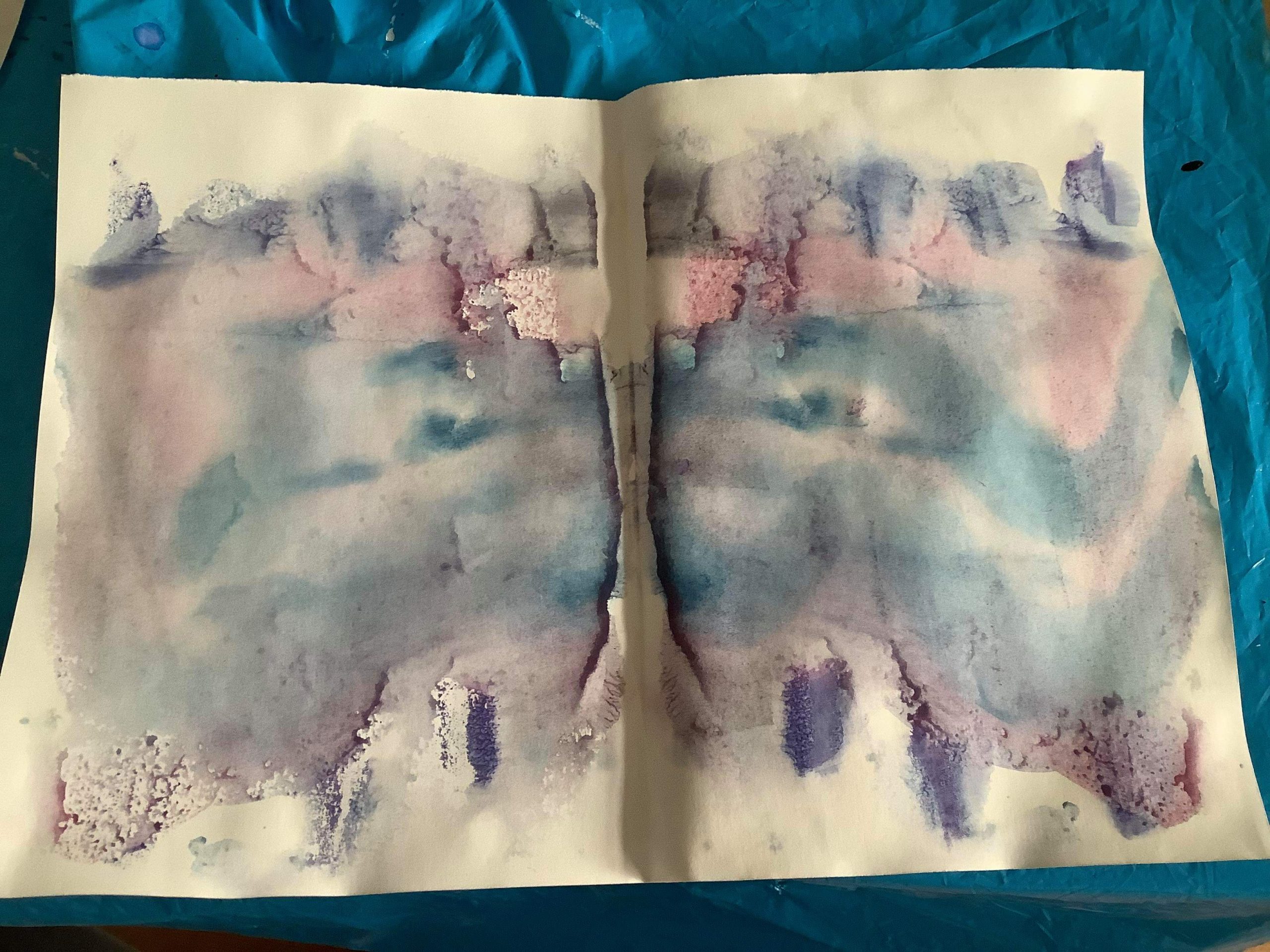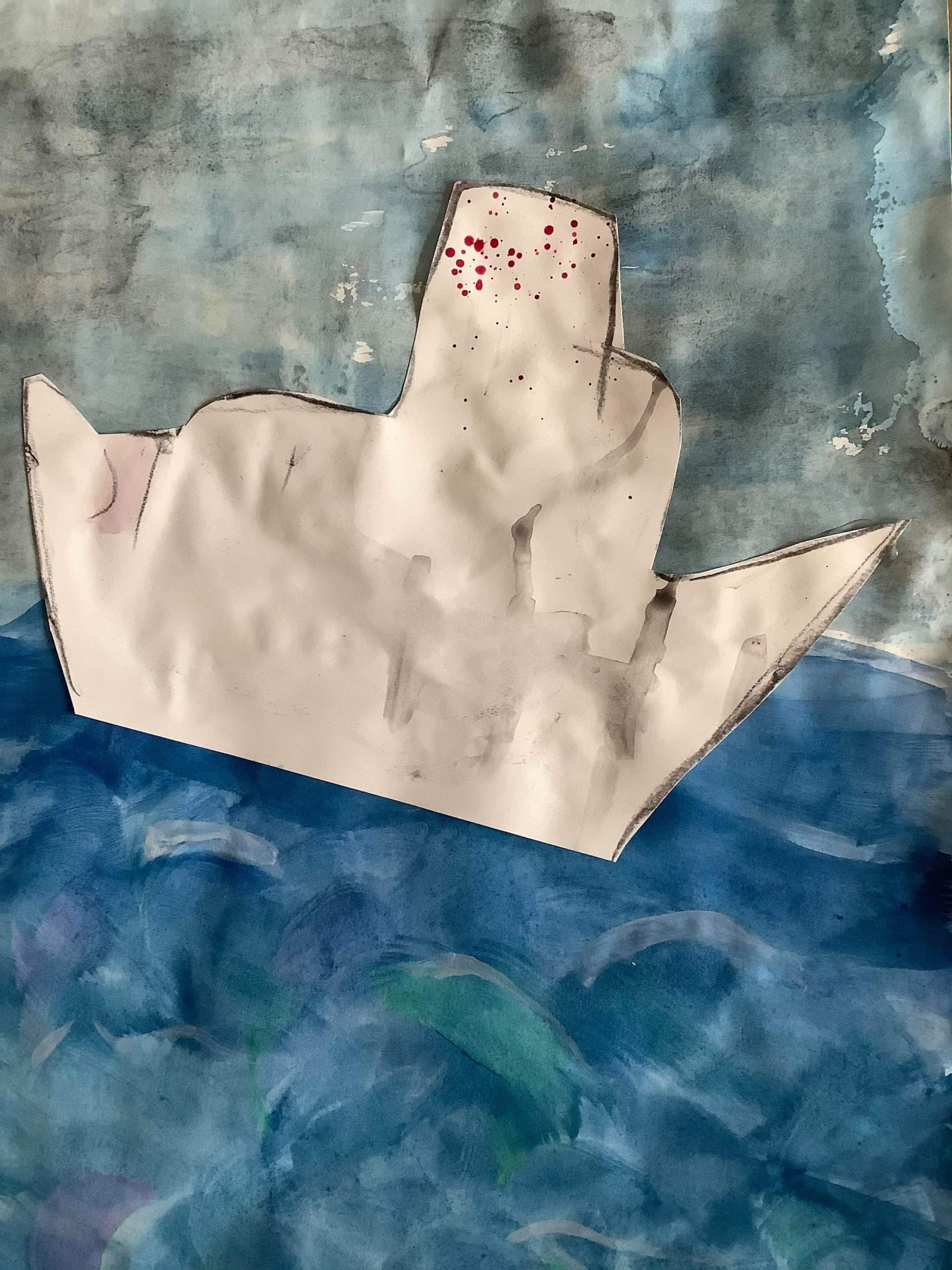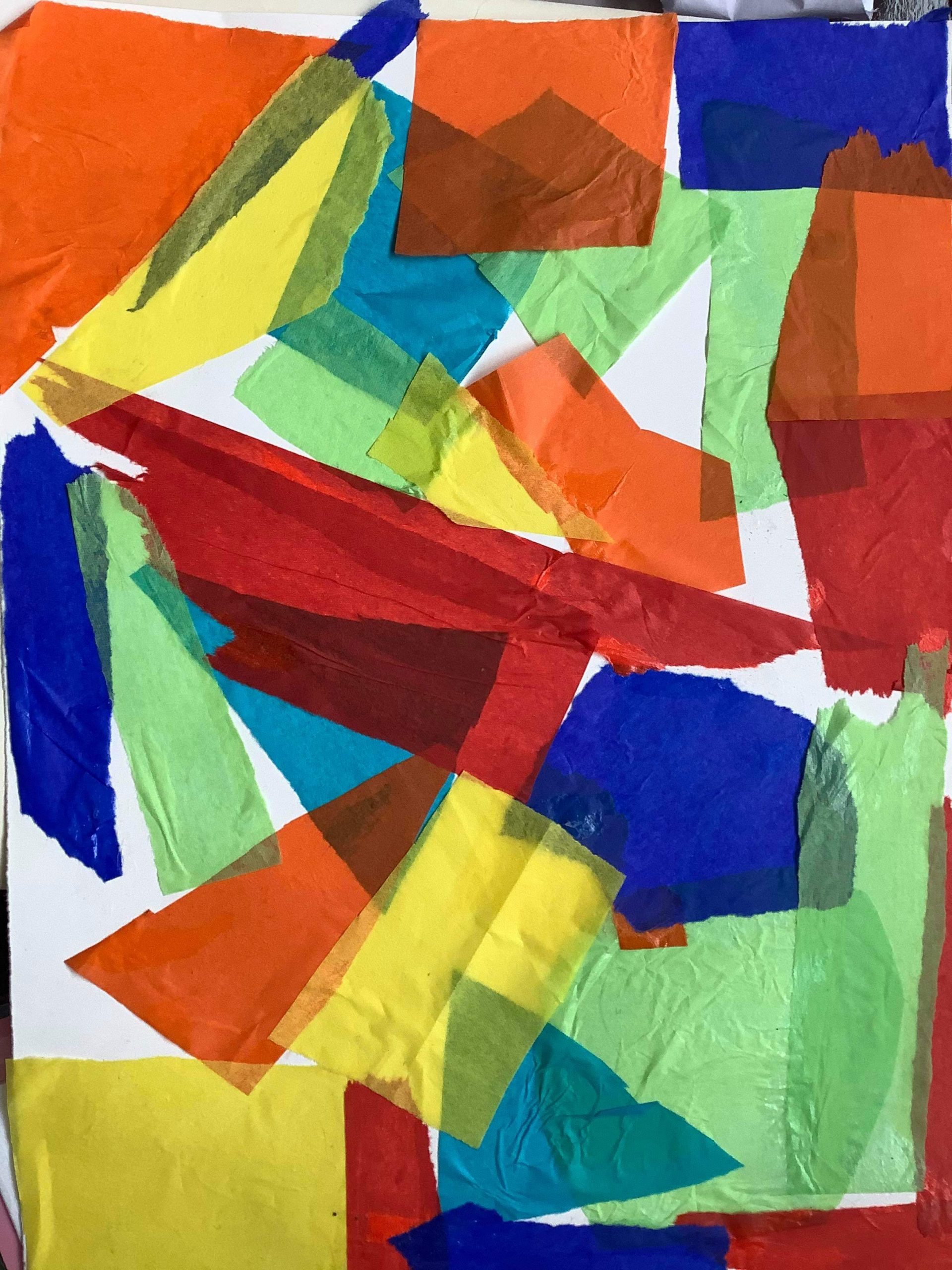Another course I’ve been doing is the Seeing Sound project – a collaboration between the brain charity’s aphasia group and the British library. Aphasia is when your brain messages don’t reach your vocal chords/speech muscles,have trouble recalling words. It most commonly occurs after a stroke but some neurological conditions, like mitochondrial disease, can be affected too.
As we learnt during our leigh network virtual art exhibition, those with any disability find ways to express themselves, usually creatively!
This was a great project for me, personally, to get involved in, as the seeing sound project was all about listening to different sounds of nature and using various art materials to paint what you hear. Its great as, being visually impaired, having hand dystonia, a-typical picture is not easy. Letting the sounds influence the hand movements and having no specific structure, is rather freeing, and my poor speech means I find communication hard, and so the art is a good way to express myself.
The materials we were given were: charcoal, tissue paper, a watercolour paint set and sketch pad. This was all new to me as I usually use acrylic paints, which have a thicker consistency, making the colour bolder. I found the watercolour more delicate than acrylic. As the course of 5 weeks progressed, my confidence with the materials increased.
Week 1 was about listening to woodland sounds, like the beautiful layered spring birdsong of morning chorus, a haunting crow of winter whose call was eerie and conjured up dark, lonely images. As I was using new materials, I was unsure how to blend the paint and tissue paper, but gave it my best go.
Week 2 we travelled around the British coast and heard crashing waves, fish swimming, crabs clacking their claws, footsteps crunching over a pebbled beach… After finding the light and dark blues that differed in contrast, I painted over the tissue paper in dark blue watercolour and found the effect much more satisfying, especially when teamed with the blended watercolours.
In week 3, we took a ( virtual) riverside walk. As I said earlier, my technique evolved. During the session when the sounds provided by the British Library, I listened to the natural noises, letting piercing chirps of birds create sharp jagged lines that contrasted with the gentler sweeps that represented the flowing water.
The image my mind conjured up, was that of a stream, the clear water flowing over rocks as sunlight reflects on top, the banks, rocky.
As the 3 previous weeks had used sounds from around the UK, it was nice to explore (virtually) and travel to the exotic rainforests of the world. I, personally, found this one the hardest, perhaps, because the closest I’ve come to one is Chester Zoo. Listening to the squawks, shrieks and squeals of the rainforest animals, bright reds, yellows, green came to mind, the shapes strong and bold. I used tissue paper to represent this.
The way I developed my skills was by during the 2 hour sessions, drawing/painting the shapes and the sounds inspired my hand to make. I also used this time to use new techniques. During the time between sessions, I hoped an image would come to me, inspired by the sounds.
The work of the artists, based in both Liverpool and London will go on display in April 2021. At the Kentish town health centre, London
Due to the pandemic, the launch is most likely to be online.
On week 5 we listened to all the sounds of the last four weeks. The time went surprisingly fast. We had time to finish off our work from the past four weeks in time for the exhibition.
I took the time to try something new by shredding different colours of tissue paper and gluing them onto card. Giving a colourful finish. It’s good to try new materials of art out, especially with the textured effect of tissue paper and paint.
